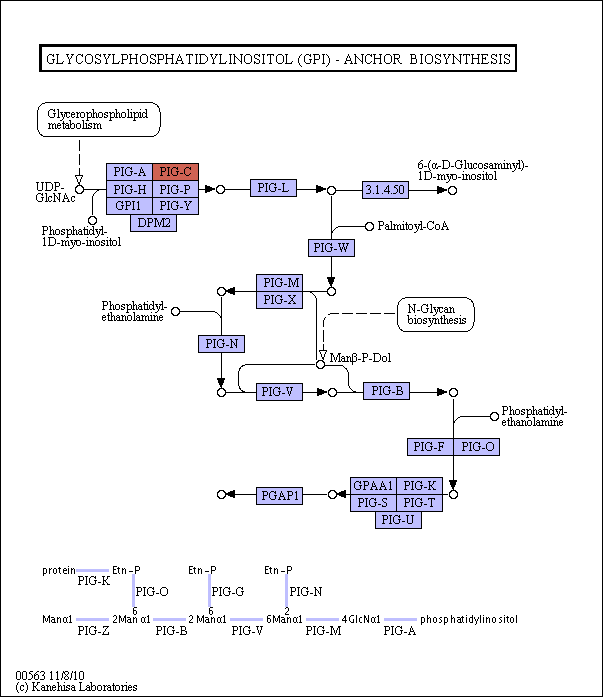|
Cell surface proteins can be attached to the cell membrane via the glycolipid structure called glycosylphosphatidylinositol (GPI) anchor. Hundreds of GPI-anchored proteins have been identified in many eukaryotes ranging from protozoa and fungi to mammals. All protein-linked GPI anchors share a common core structure, characterized by the substructure Man (a1-4) GlcN (a1-6) myo-inositol-1P-lipid. Biosynthesis of GPI anchors proceeds in three stages: (i) preassembly of a GPI precursor in the ER membrane, (ii) attachment of the GPI to the C-terminus of a newly synthesized protein in the lumen of the ER, and (iii) lipid remodeling and/or carbohydrate side-chain modifications in the ER and the Golgi. Defects of GPI anchor biosynthesis gene result in a genetic disorder, paroxysmal nocturnal hemoglobinuria. |
 Glycosylphosphatidylinositol(GPI)-anchor biosynthesis - Reference pathway (KO)
Glycosylphosphatidylinositol(GPI)-anchor biosynthesis - Reference pathway (KO)

 Glycosylphosphatidylinositol(GPI)-anchor biosynthesis - Reference pathway (KO)
Glycosylphosphatidylinositol(GPI)-anchor biosynthesis - Reference pathway (KO)

